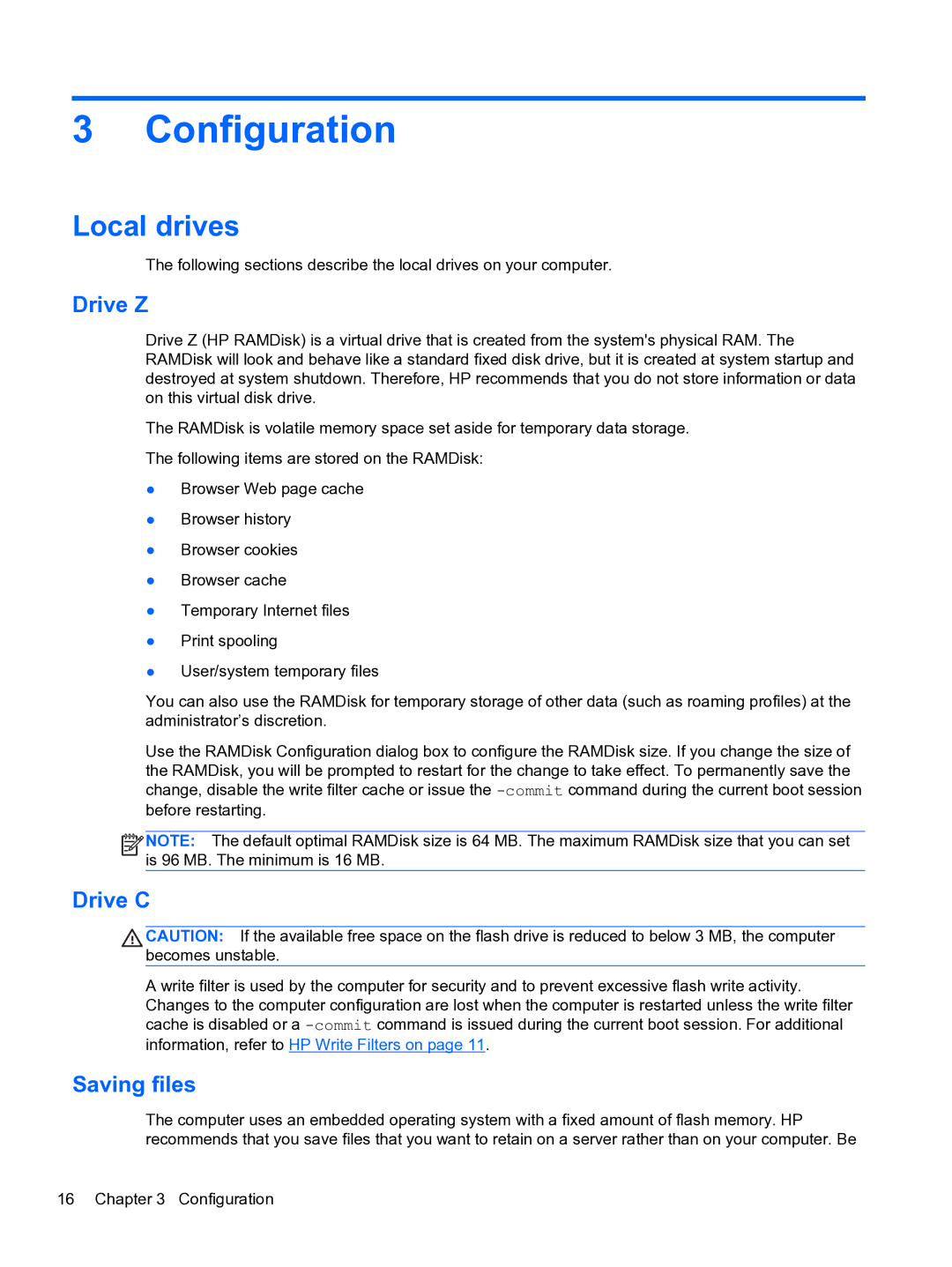
3 Configuration
Local drives
The following sections describe the local drives on your computer.
Drive Z
Drive Z (HP RAMDisk) is a virtual drive that is created from the system's physical RAM. The RAMDisk will look and behave like a standard fixed disk drive, but it is created at system startup and destroyed at system shutdown. Therefore, HP recommends that you do not store information or data on this virtual disk drive.
The RAMDisk is volatile memory space set aside for temporary data storage.
The following items are stored on the RAMDisk:
●Browser Web page cache
●Browser history
●Browser cookies
●Browser cache
●Temporary Internet files
●Print spooling
●User/system temporary files
You can also use the RAMDisk for temporary storage of other data (such as roaming profiles) at the administrator’s discretion.
Use the RAMDisk Configuration dialog box to configure the RAMDisk size. If you change the size of the RAMDisk, you will be prompted to restart for the change to take effect. To permanently save the change, disable the write filter cache or issue the
![]()
![]()
![]() NOTE: The default optimal RAMDisk size is 64 MB. The maximum RAMDisk size that you can set is 96 MB. The minimum is 16 MB.
NOTE: The default optimal RAMDisk size is 64 MB. The maximum RAMDisk size that you can set is 96 MB. The minimum is 16 MB.
Drive C
CAUTION: If the available free space on the flash drive is reduced to below 3 MB, the computer becomes unstable.
A write filter is used by the computer for security and to prevent excessive flash write activity. Changes to the computer configuration are lost when the computer is restarted unless the write filter cache is disabled or a
Saving files
The computer uses an embedded operating system with a fixed amount of flash memory. HP recommends that you save files that you want to retain on a server rather than on your computer. Be
16 Chapter 3 Configuration
